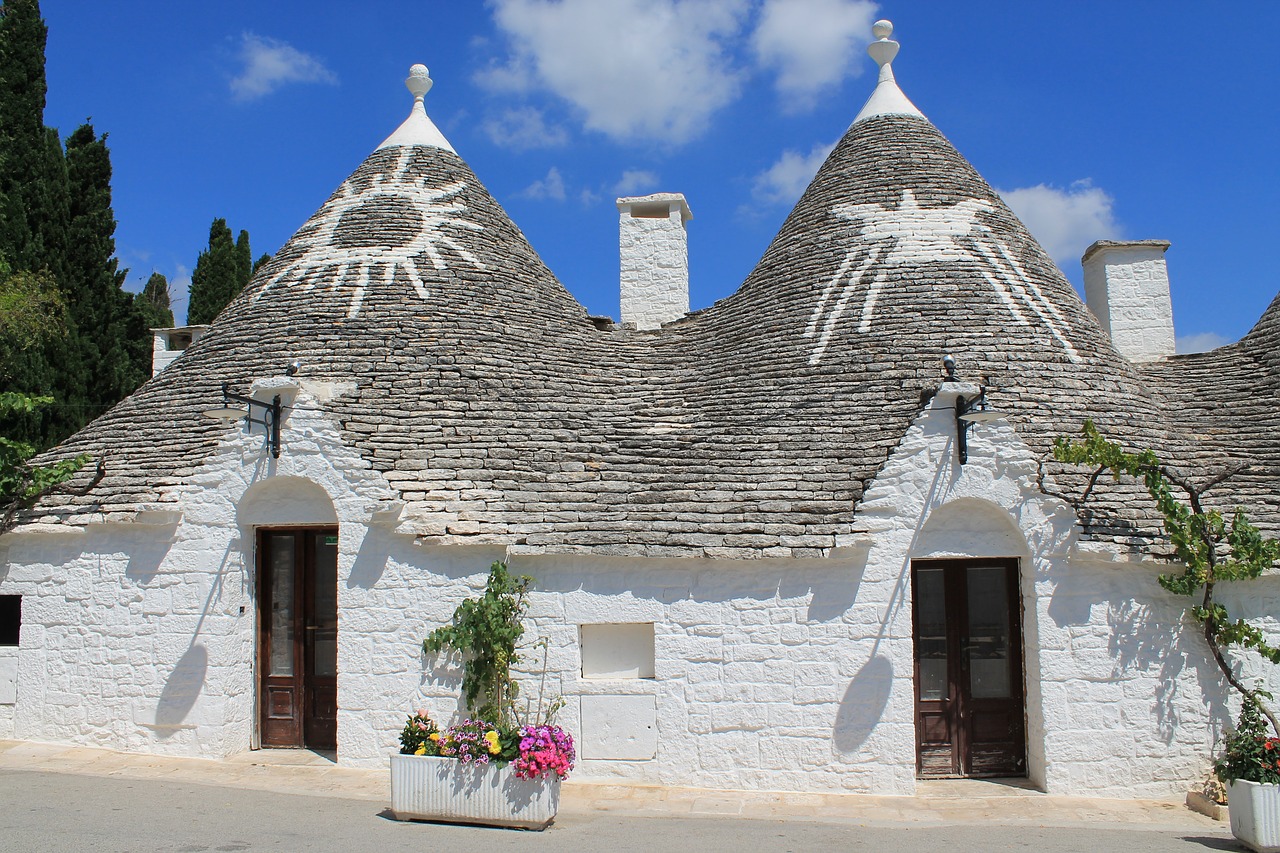Alberobello is a small town and comune in the Metropolitan City of Bari, Apulia, southern Italy. It has 10,735 inhabitants and is famous for its unique trullo buildings. Since 1996 the trulli of Alberobello have been designated as a UNESCO World Heritage Site.
A first occupation of the area began only at the beginning of the 16th century on the impulse of the Count of Conversano Andrea Matteo III Acquaviva d’Aragona. This allowed about forty peasant families from Noci to settle here and cultivate the land, with the obligation to give them a tenth of the crops.
In 1635 his successor, Count Giangirolamo II (1600-1665) had an inn with a tavern and an oratory erected and began the urbanization of the area with the construction of some small houses. Expansion of the urban area was aided by the abundance of limestone, karst and sedimentary limestone. By the permission of the count to build houses only with dry stone walls without the use of mortar, which would become the peculiar trulli. The obligation to build houses with dry stones was an expedient of the count to avoid paying taxes to the Spanish viceroy of the Kingdom of Naples. The center of Alberobello was built along the streets of the ancient Cana river. Now Largo Giuseppe Martelotta is now located.
Alberobello remained a fief of Acquaviva d’Aragona until 27 May 1797, when King Ferdinand IV of Bourbon elevated the small village to the royal city, freeing it from the feudal servitude of the counts. On 22 June 1797 the first mayor Francesco Giuseppe Lippolis was elected. Alberobello is the only inhabited center with an entire district of trulli. It is therefore considered the cultural capital of the trulli of the Valle d’Itria.
The trulli of Alberobello
The history of the trulli is linked to the Pragmatica De Baronibus. An edict of the Kingdom of Naples from the 15th century which subjected each new settlement to a tribute. In 1481 the Counts of Conversano D’Acquaviva D’Aragona since 1481, owners of the territory of Alberobello, therefore forced the inhabitants to build their houses dry, without using mortar. So that they could be configured as precarious buildings and easily demolished. Having to use only stones, the farmers found the simplest configuration in the round shape with a self-supporting domed roof. The roofs have been embellished with decorative pinnacles which represent the signature of the architect (maestro trullaro).









Discussion about this post